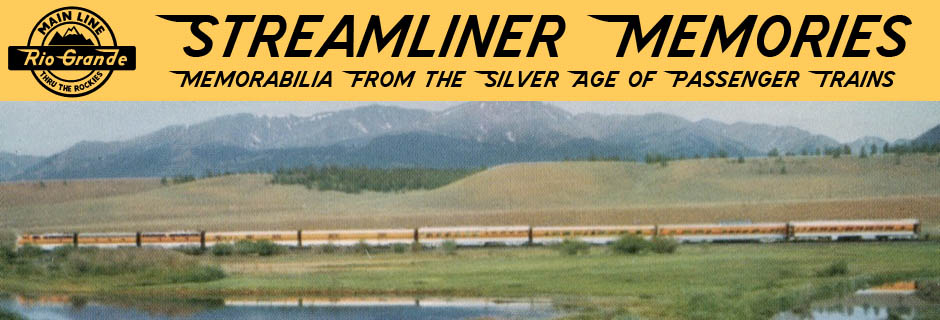Unlike yesterday’s cards, these advertise that the North Coast Limited was “completely air-conditioned.” These means they were issued in 1937 or later.
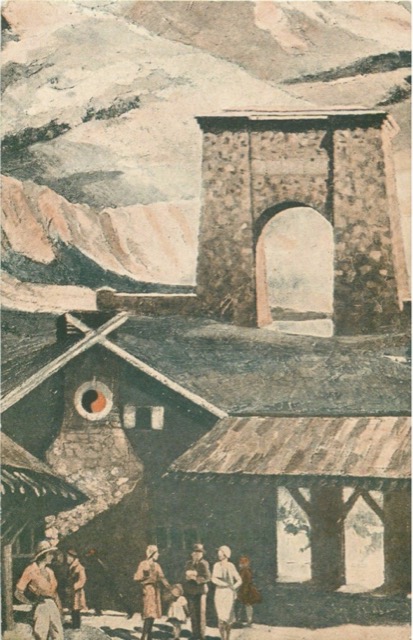 Click image to download a 413-KB PDF of this postcard.
Click image to download a 413-KB PDF of this postcard.
This postcard manages to show the Roosevelt Arch (which the back of the card calls Gardiner Arch) directly behind Northern Pacific’s Gardiner Station.
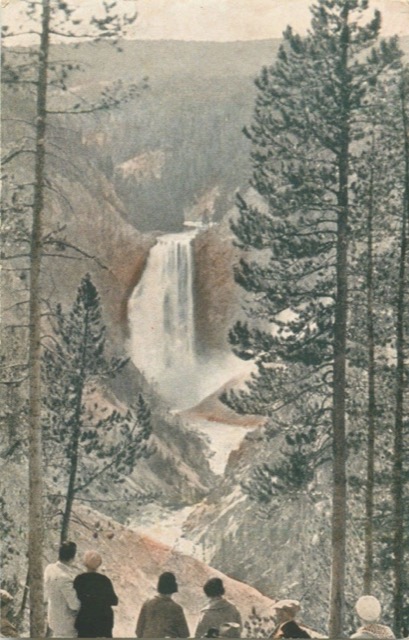 Click image to download a 469-KB PDF of this postcard.
Click image to download a 469-KB PDF of this postcard.
This card shows Yellowstone Falls, but the back is a note from someone who says they are “having a fine time” in North Dakota. The card was mailed from Glendive, Montana to Harlan, Iowa.
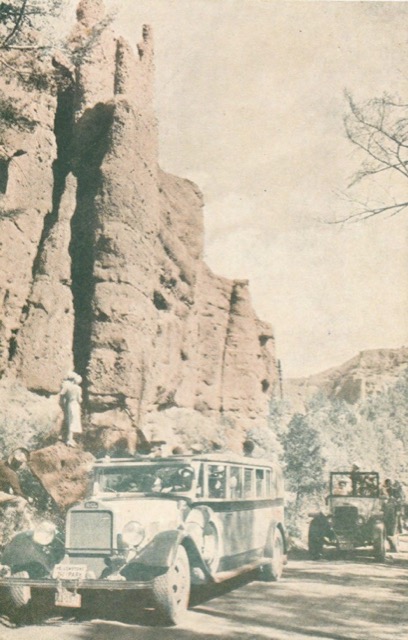 Click image to download a 373-KB PDF of this postcard.
Click image to download a 373-KB PDF of this postcard.
Northern Pacific-Burlington passengers who entered or left Yellowstone Park via the Cody Road would see Chimney Rock. Unfortunately, this is a poor view of the rock, which is entirely detached from the cliff next to it. The old cars suggest this photo was taken several years before 1937.
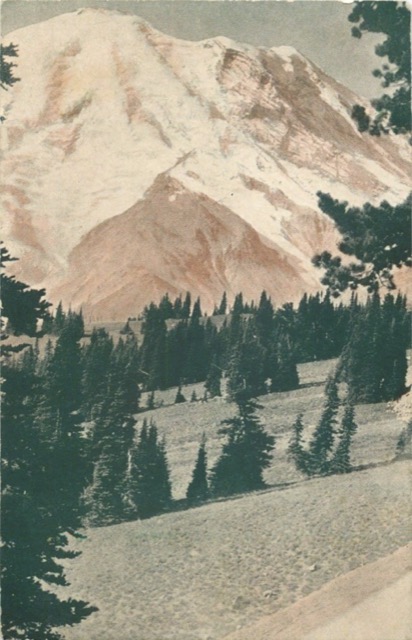 Click image to download a 373-KB PDF of this postcard.
Click image to download a 373-KB PDF of this postcard.
While a standard photo of Mt. Rainier, the back of this card advertises the “new Yakima Gateway to Rainier National Park.” I think the card refers to U.S. 12, which connected Yakima with Mt. Rainier Park. “A shortcut from near Packwood east across White Pass to Naches,” says Wikipedia, “was added to the state highway system in 1931,” while “The roadway between Packwood and Cayuse Pass. . . was finally completed in 1940.” The card must refer to one of these two roads.
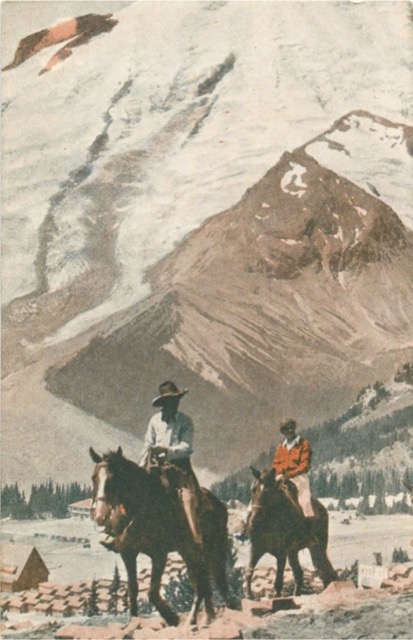 Click image to download a 390-KB PDF of this postcard.
Click image to download a 390-KB PDF of this postcard.
This card shows riders near the cabins at Sunrise, which, at 6,400 feet–still 8,000 feet below the mountain’s summit–is the highest point reached by road in the park. Today, I can see some cabins just northwest of the Sunrise Visitor Center, but they aren’t advertised to the public so they must be used as employee residences.
